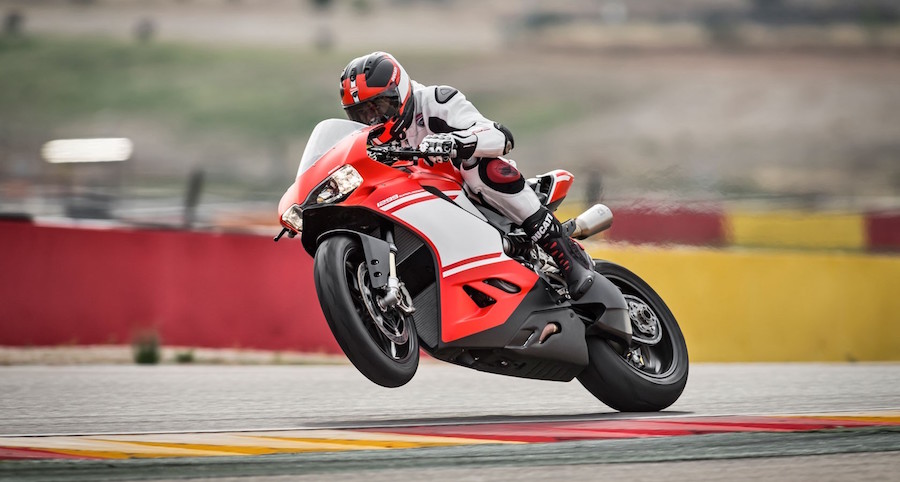Ducati’s most exclusive superbike has two new electronic gizmos that, when used properly, would make you look like a racing God
We’ve always known that the race teams with the most money, mixed with talented riders, are generally the ones with the best chance of winning races.
Now, with Ducati’s latest Superleggera production superbike, and in the right hands, some new Bosch-developed tech could turn your also-ran rider into a power-sliding hero. Not only that, his or her rivals will be able to follow the big blackies they laid on the corner exit, cos there’s some other tech built into this bike that will assist in nailing the often tricky race starts too.
The new electrickery is a first for Ducati, and can currently only be found on its ultra-light, ultra-gorgeous and ultra-expensive 1299 Superleggera.
True, it’s a bike with a price tag of $US80,000 ($A107,000) – Aussie price to be announced – with just 500 examples to be produced, so you’re unlikely to see one parked outside your local cafe. But, like most technology that debuts on high-end exotica, expect refined versions of the tech to trickle down to more accessible Ducati-branded machinery in the coming years.
Ducati Power Launch
Ducati’s Electronic Power Launch (DPL) might be a first for a Ducati sportsbike, but it’s a variation on similar technology we’ve already seen. Working only in the first two gears, DPL uses a variety of sensors to regulate the revs to ensure the engine is spinning at the perfect speed to give you the most efficient (read: fastest) take-off from a standing start. The system is programmed to stop intervention either when you reach a pre-programmed speed or when you snick third gear, whichever comes first.
Electronic Slide Control
Electronic Slide Control (ESC) is basically an even more refined traction control system that, instead of stopping your rear wheel from spinning under acceleration at lean, regulates it to essentially allow you to steer the bike with the rear end. Using the six-axis Intertial Measurement Unit, the system regulates the bike’s torque output depending on your lean angle and, instead of launching you into a high-side after the grip returns to a spinning tyre, turns you into a power-sliding God.

By Kellie Buckley